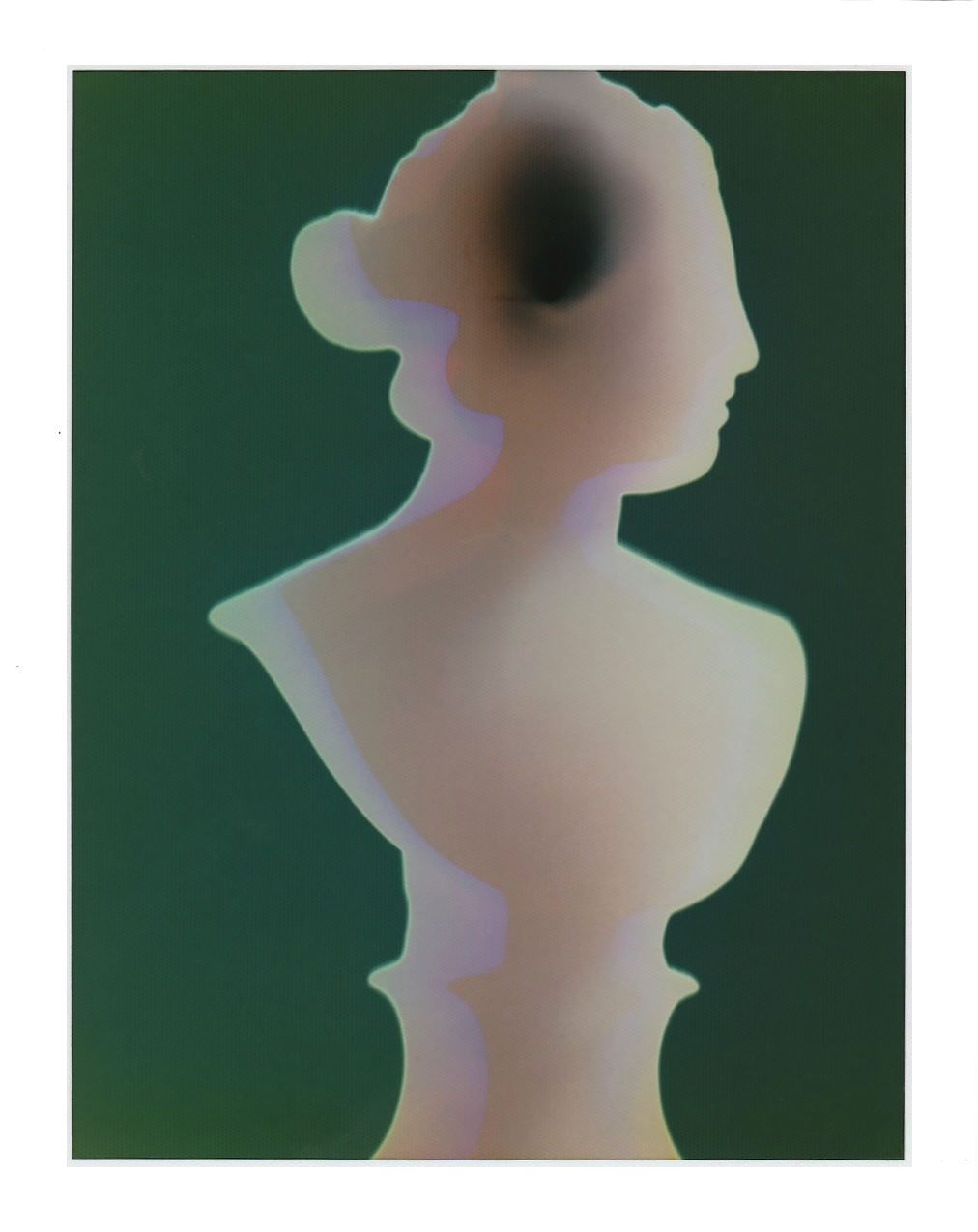The Venus Mirror
The Venus Mirror is a set of colour photograms on expired Fujifilm FP100C film. The images are made at night, by placing a Victorian Wedgwood yellow jasperware figurine of Venus directly on top of the film and exposing her to light. By its nature, the expired film is an unreliable, experimental medium. Each image is completely unique and results can never be exactly replicated.
Experimental ongoing series by Sarah Gillett ©2024

The Roman goddess Venus is responsible for many things: love, beauty, prosperity, fertility, and victory. Too much, surely, for one goddess to cover.
The Venus Mirror multiplies the singular goddess into many imagined women, seen obliquely from different aspects. By varying the power, colour, distance and time of the light source she is transformed from her solid form into something more ficitious, mutable and dreamlike. Flaws, dust, imperfections and the weight of her pressing into the film are all present.
Josiah Wedgwood named his pottery ‘jasperware’ after the mineral jasper, a favourite gem in the ancient world which occurs in many colours including green, red, yellow, brown and very rarely, blue. Wedgwood kept the recipe for his jasperware a secret, but 19th century analysis suggested it was 57% barium sulphate (a cawk by-product of lead mining in Derbyshire), 29% ball clay (kaolin, mica, quartz), 10% flint and 4% barium carbonate (a white salt). The Venus Mirror acknowledges the complex mineral composition of Venus, who is never just one thing.